A Comparative Study on the Performances of Flat Plate and Evacuated Tube Collectors Deployable in Domestic Solar Water Heating Systems in Different Climate Areas
Abstract
:1. Introduction
2. Solar Collectors
2.1. Flat-Plate Collectors
2.2. Evacauted-Tube Collectors
3. Methodology and Operational Conditions of the Investigation
- single flat-plate collector;
- single evacuated-tube collector;
- string of four flat-plate solar collectors connected in series;
- string of four evacuated-tube solar collectors connected in series.
- Type 109-TMY2, that has the main purpose of reading the meteorological data at regular time intervals from a data file and processing the solar radiation data to obtain the surface radiation on inclined surfaces. The type-109 reads a meteorological data file in the standard TMY2 format. The TMY2 format is used by the National Solar Radiation Database (USA);
- Type 65d, that is used to plot the quantities of interest in the desired time interval.
- water as heat transfer fluid ( = 4.190 kJ/kg K);
- fluid flow rate = 72 kg/hr;
- fluid return temperature of the collector = [10; 15; 20; 25] °C
- collector slope (the angle formed by the panel and the horizontal) = 20°;
- angle of incidence: 1st order IAM factor = 0.05.
- Naples (Italy);
- Kabul (Afghanistan);
- Stockholm (Sweden).
4. Results and Discussion
4.1. Results for the Collectors Tested in Single Configuration
4.2. Results for a String of Four Collectors
5. Conclusions
- The performance of the flat-plate collector is low in cold seasons due to thermal losses and its use is discouraged in cold climatic areas. These data emerge more significantly not on the single panel evaluation but on the string of four collectors. Specifically, 15.6% and 13.1% are the maximum and medium increments of the water outlet temperature registered in Stockholm when using a string of four ETCs with respect to a string composed of four FPCs. In warm seasons, on the contrary, the flat-plate collector takes advantage of the high environmental temperatures and heats the fluid more.
- In cold seasons, due to thermal losses, the evacuated-tube collector reduces the dispersion of heat to approximately zero.
- The outlet temperature and thermal power achieved by the ETC is higher if compared to the FPC in cold climates. In Stockholm, the thermal power increment achieved by a string of four ETCs with respect to four FPCs is located in the 12–22% range. In Naples and in Kabul, the thermal power increments are slightly reduced but nonetheless satisfying: 8.9–14.9% (Naples) and 6.6–13.5% (Stockholm). Indeed, based on the data collected, one can assert that the ETCs perform better than the FPCs since their outputs are superior all through the year including in winter climates. Hence, the ETC is the best selection for climatic conditions prevailing in Naples (Italy), Kabul (Afghanistan), and Stockholm (Sweden).
Author Contributions
Funding
Conflicts of Interest
Nomenclature
| Roman symbols | |
| A | area, m2 |
| c | specific heat, J kg−1 K−1 |
| F | factor |
| G | incident radiant power flux, W m−2 |
| H | heat exchange coefficient per unit, W m−2 K−1 |
| flow rate, kg s−1 | |
| Q | energy, kWh |
| power, W | |
| T | temperature, °C |
| U | global coefficient, W K−1 |
| Greek symbols | |
| α | plate absorption coefficient, - |
| efficiency of the collector, - | |
| Τ | glass transmission coefficient, - |
| Subscripts | |
| a | ambient |
| c | collector |
| g-a | glass-ambient |
| i | fluid inlet at the collector |
| L | thermal losses |
| max | at maximum |
| out | outlet at the collector |
| p | constant pressure |
| p-g,c | plate-glass conductive |
| p-g,r | plate-glass irradiative |
| R | heat removal |
| u | useful |
References
- Le, T.H.; Chang, Y.; Park, D. Renewable and Nonrenewable Energy Consumption, Economic Growth, and Emissions: International Evidence. Energy J. 2020, 41. [Google Scholar] [CrossRef]
- Greco, A.; Mastrullo, R.; Palombo, A. R407C as an alternative to R22 in vapour compression plant: An experimental study. Int. J. Energy Res. 1997, 21, 1087–1098. [Google Scholar] [CrossRef]
- Greco, A.; Vanoli, G.P. Experimental two-phase pressure gradients during evaporation of pure and mixed refrigerants in a smooth horizontal tube. Comparison with correlations. Heat Mass Transfer 2006, 42, 709–725. [Google Scholar] [CrossRef]
- Greco, A.; Vanoli, G.P. Flow boiling heat transfer with HFC mixtures in a smooth horizontal tube. Part II: Assessment of predictive methods. Exp. Therm. Fluid Sci. 2005, 29, 199–208. [Google Scholar] [CrossRef]
- Aprea, C.; Greco, A.; Maiorino, A.; Masselli, C.; Metallo, A. HFO1234yf as a drop-in replacement for R134a in domestic refrigerators: A life cycle climate performance analysis. Int. J. Heat Technol. 2016, 34, S212–S218. [Google Scholar] [CrossRef] [Green Version]
- Afridi, M.A.; Kehelwalatenna, S.; Naseem, I.; Tahir, M. Per capita income, trade openness, urbanization, energy consumption, and CO2 emissions: An empirical study on the SAARC Region. Environ. Sci. Pollut. Res. 2019, 26, 29978–29990. [Google Scholar] [CrossRef]
- Al-Ghussain, L. Global warming: Review on driving forces and mitigation. Environ. Prog. Sustain. Energy 2019, 38, 13–21. [Google Scholar] [CrossRef] [Green Version]
- Aprea, C.; Greco, A.; Maiorino, A.; Masselli, C. Analyzing the energetic performances of AMR regenerator working with different magnetocaloric materials: Investigations and viewpoints. Int. J. Heat Technol. 2017, 35, S383–S390. [Google Scholar] [CrossRef]
- Aprea, C.; Greco, A.; Maiorino, A.; Masselli, C. The environmental impact of solid-state materials working in an active caloric refrigerator compared to a vapor compression cooler. Int. J. Heat Technol. 2018, 36, 1155–1162. [Google Scholar] [CrossRef]
- Aprea, C.; Greco, A.; Maiorino, A.; Masselli, C. The use of barocaloric effect for energy saving in a domestic refrigerator with ethylene-glycol based nanofluids: A numerical analysis and a comparison with a vapor compression cooler. Energy 2020, 190, 116404. [Google Scholar] [CrossRef]
- Aprea, C.; Greco, A.; Maiorino, A.; Masselli, C. The employment of caloric-effect materials for solid-state heat pumping. Int. J. Refrig. 2020, 109, 1–11. [Google Scholar] [CrossRef]
- Franzén, I.; Nedar, L.; Andersson, M. Environmental Comparison of Energy Solutions for Heating and Cooling. Sustainability 2019, 11, 7051. [Google Scholar] [CrossRef] [Green Version]
- Aprea, C.; Cardillo, G.; Greco, A.; Maiorino, A.; Masselli, C. A rotary permanent magnet magnetic refrigerator based on AMR cycle. Applied Thermal Engineering 2016, 101, 699–703. [Google Scholar] [CrossRef]
- Brown, D.R.; Stout, T.B.; Dirks, J.A.; Fernandez, N. The prospects of alternatives to vapor compression technology for space cooling and food refrigeration applications. Energy Eng. 2012, 109, 7–20. [Google Scholar] [CrossRef] [Green Version]
- Brown, J.S.; Domanski, P.A. Review of alternative cooling technologies. Appl. Therm. Eng. 2014, 64, 252–262. [Google Scholar] [CrossRef]
- Goetzler, W.; Zogg, R.; Young, J.; Johnson, C. Alternatives to vapor-compression HVAC technology. ASHRAE J. 2014, 56, 12. [Google Scholar]
- Rosiek, S.; Batlles, F.J. Renewable energy solutions for building cooling, heating and power system installed in an institutional building: Case study in southern Spain. Renew. Sustain. Energy Rev. 2013, 26, 147–168. [Google Scholar] [CrossRef]
- Moretti, E.; Bonamente, E.; Buratti, C.; Cotana, F. Development of innovative heating and cooling systems using renewable energy sources for non-residential buildings. Energies 2013, 6, 5114–5129. [Google Scholar] [CrossRef]
- D′Agostino, D.; Esposito, F.; Greco, A.; Masselli, C.; Minichiello, F. The Energy Performances of a Ground-to-Air Heat Exchanger: A Comparison Among Köppen Climatic Areas. Energies 2020, 13, 2895. [Google Scholar] [CrossRef]
- D′Agostino, D.; Esposito, F.; Greco, A.; Masselli, C.; Minichiello, F. Parametric Analysis on an Earth-to-Air Heat Exchanger Employed in an Air Conditioning System. Energies 2020, 13, 2925. [Google Scholar] [CrossRef]
- Kabir, E.; Kumar, P.; Kumar, S.; Adelodun, A.A.; Kim, K. Solar Energy: Potential and Future Prospects. Renew. Energy Sustain. Energy 2018, 82, 894–900. [Google Scholar] [CrossRef]
- Ge, T.S.; Wang, R.Z.; Xu, Z.Y.; Pan, Q.W.; Du, S.; Chen, X.M.; Ma, T.; Wu, X.N.; Sun, X.L.; Chen, J.F. Solar heating and cooling: Present and future development. Renew. Energy 2018, 126, 1126–1140. [Google Scholar] [CrossRef]
- Quiñones, G.; Felbol, C.; Valenzuela, C.; Cardemil, J.M.; Escobar, R.A. Analyzing the potential for solar thermal energy utilization in the Chilean copper mining industry. Sol. Energy 2020, 197, 292–310. [Google Scholar] [CrossRef]
- Fahrenbruch, A.; Bube, R. Fundamentals of Solar Cells: Photovoltaic Solar Energy Conversion; Elsevier Books: Amsterdam, The Netherlands, 2012. [Google Scholar]
- Razali, N.F.M.; Fudholi, A.; Ruslan, M.H.; Sopian, K. Review of water-nanofluid based photovoltaic/thermal (PV/T) systems. Int. J. Electr. Comput. Eng. 2019, 9, 134. [Google Scholar] [CrossRef]
- What Is TRNSYS. Available online: http://www.trnsys.com/ (accessed on 13 May 2020).
- Ibrik, I.; Abusafa, A.; Mansour, L. Experimental Analysis of Different Solar Water Heating Systems according to Palestinian Environmental Conditions. Int. J. Eng. Res. Technol. 2019, 12, 1901–1906. [Google Scholar]
- Ucar, A.; Inalli, M. Thermal and economical analysis of a central solar heating system with underground seasonal storage in Turkey. Renew. Energy 2005, 30, 1005–1019. [Google Scholar] [CrossRef]
- Ucar, A.; Inalli, M. Thermal and economic comparisons of solar heating systems with seasonal storage used in building heating. Renew. Energy 2008, 33, 2532–2539. [Google Scholar] [CrossRef]
- Tian, Z.; Zhang, S.; Deng, J.; Fan, J.; Huang, J.; Kong, W.; Furbo, S. Large-scale solar district heating plants in Danish smart thermal grid: Developments and recent trends. Energy Convers. Manag. 2019, 189, 67–80. [Google Scholar] [CrossRef]
- Lan, B.; Tian, Z.; Niu, J.; Wang, W.; Lu, S. Applicability analysis of solar heating system in China based on a reliability-based optimization method for auxiliary heater capacity. Sustain. Cities Soc. 2020, 53, 101930. [Google Scholar] [CrossRef]
- Li, Z.; Xu, Y. Applicability Analysis of Solar District Heating in North Rural Areas. In IOP Conference Series: Earth and Environmental Science; IOP Publishing: Bristol, UK, 2019; Volume 238, p. 012084. [Google Scholar]
- Anthony, M.D.; Lee, B.W. Inhibited Ethylene and Propylene Glycols for Corrosion and Freeze Protection in Water-Based HVAC Systems. ASHRAE Trans. 1997, 103, 446. [Google Scholar]
- Maraj, A.; Londo, A.; Firat, C.; Gebremedhin, A. Comparison of the energy performance between flat plate and heat pipe evacuated tube collectors for solar water heating system under Mediterranean climate conditions. J. Sustain. Dev. Energy Water Environ. Syst. 2019, 7, 87–100. [Google Scholar] [CrossRef] [Green Version]
- Miloştean, D.; Flori, M. An overview on the flat-plate solar collectors and their thermal efficiency. Ann. Fac. Eng. Hunedoara 2017, 15, 123–128. [Google Scholar]
- Zambolin, E.; Del Col, D. Experimental analysis of thermal performance of flat plate and evacuated tube solar collectors in stationary standard and daily conditions. Sol. Energy 2010, 84, 1382–1396. [Google Scholar] [CrossRef]
- Ayompe, L.M.; Duffy, A.; Mc Keever, M.; Conlon, M.; McCormack, S.J. Comparative field performance study of flat plate and heat pipe evacuated tube collectors (ETCs) for domestic water heating systems in a temperate climate. Energy 2011, 36, 3370–3378. [Google Scholar] [CrossRef] [Green Version]
- Mehmood, A.; Waqas, A.; Said, Z.; Rahman, S.M.A.; Akram, M. Performance evaluation of solar water heating system with heat pipe evacuated tubes provided with natural gas backup. Energy Rep. 2019, 5, 1432–1444. [Google Scholar] [CrossRef]
- del Mar Casanovas-Rubio, M.; Armengou, J. Decision-making tool for the optimal selection of a domestic water-heating system considering economic, environmental and social criteria: Application to Barcelona (Spain). Renew. Sustain. Energy Rev. 2018, 91, 741–753. [Google Scholar] [CrossRef]
- Klevinskis, A.; Bucinskas, V. Analysis of a flat-plate solar collector. Moksl. Liet. Ateitis Sci. Future Lith. 2011, 3, 39–43. [Google Scholar] [CrossRef]
- Frid, S.E.; Lisitskaya, N.V. State-of-the-Art Solar Collectors: Typical Parameters and Trends. Appl. Sol. Energy 2018, 54, 279–286. [Google Scholar] [CrossRef]
- Bliss, R.W., Jr. The derivations of several “plate-efficiency factors” useful in the design of flat-plate solar heat collectors. Sol. Energy 1959, 3, 55–64. [Google Scholar] [CrossRef]
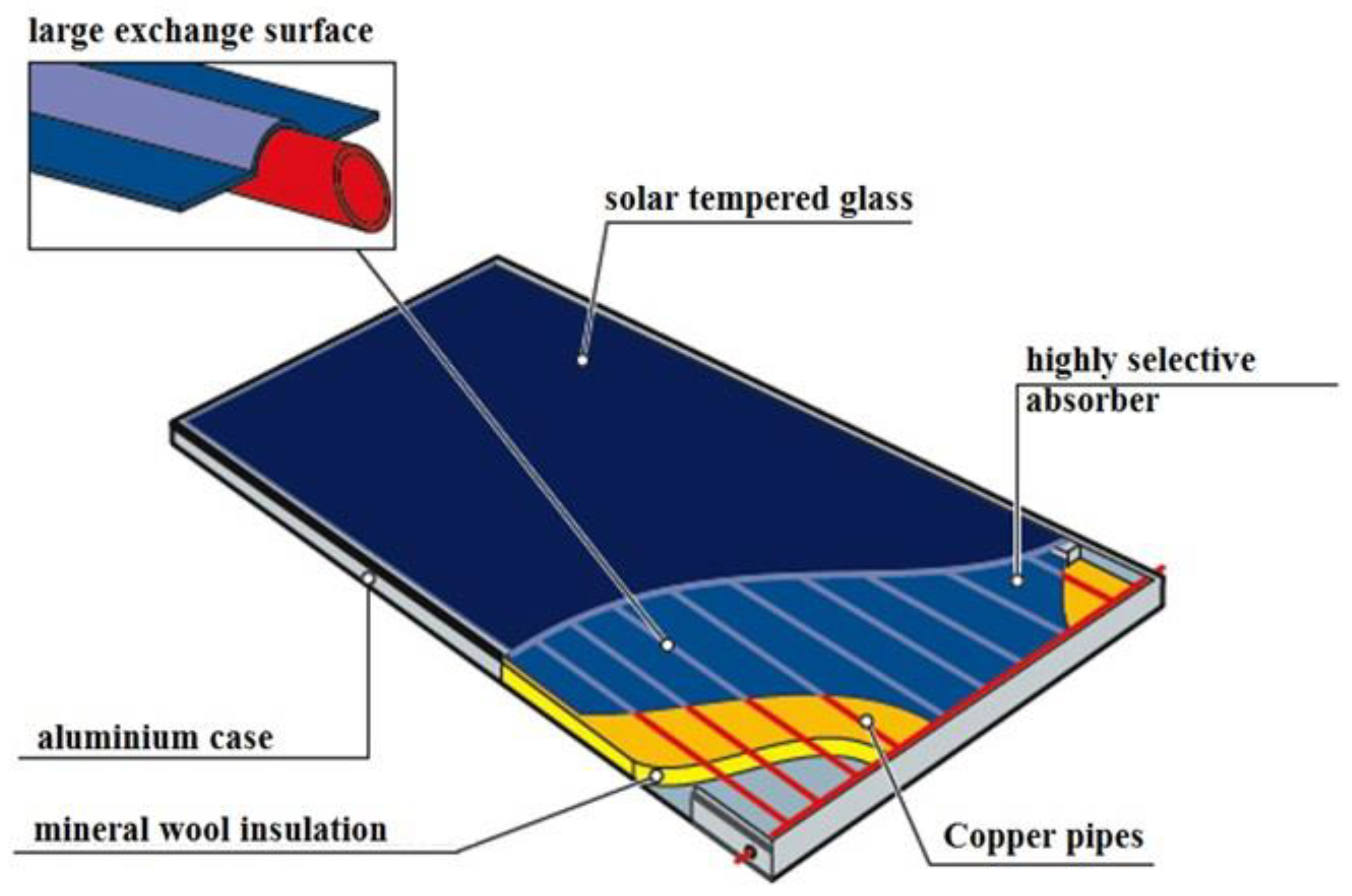



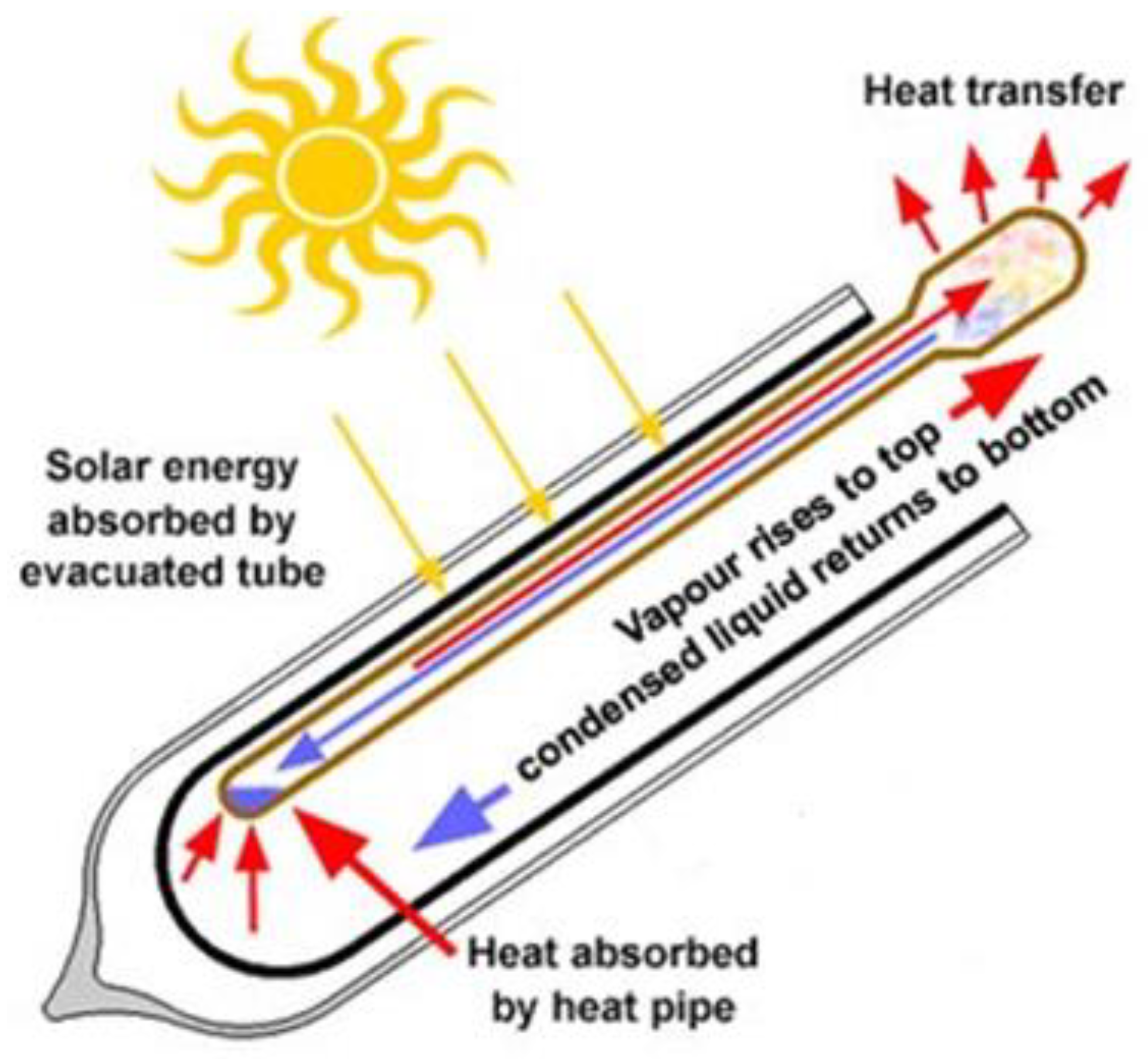
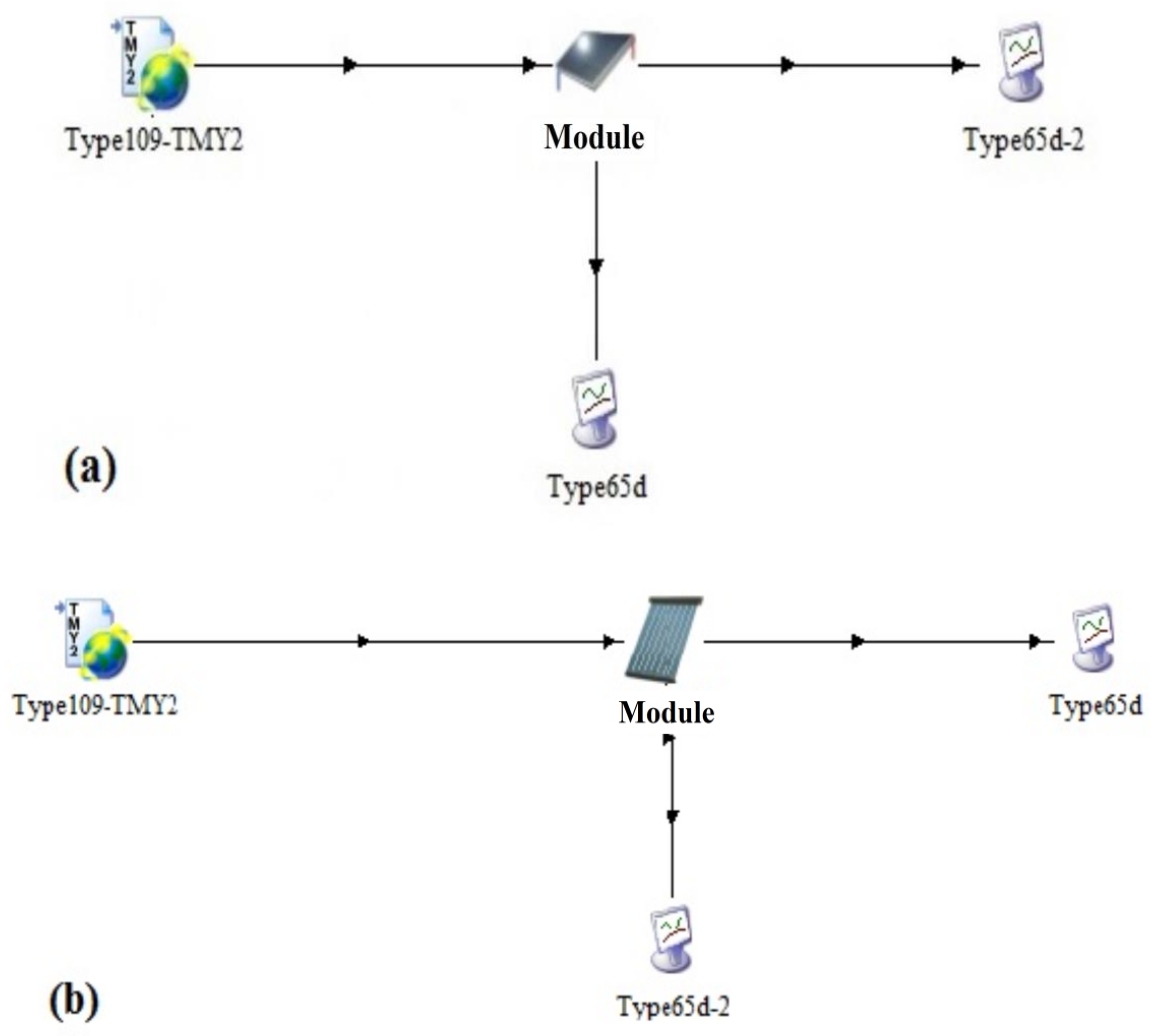
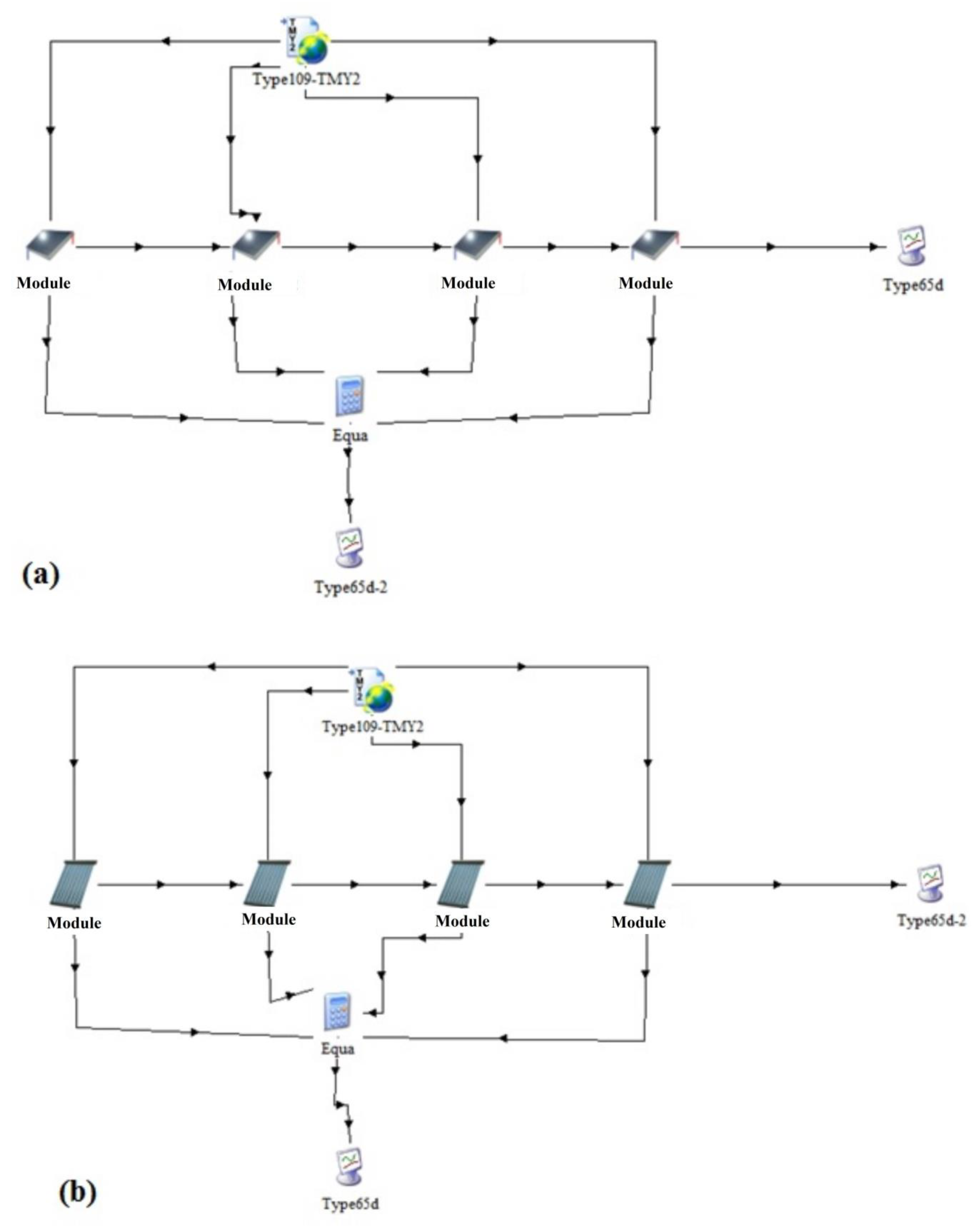

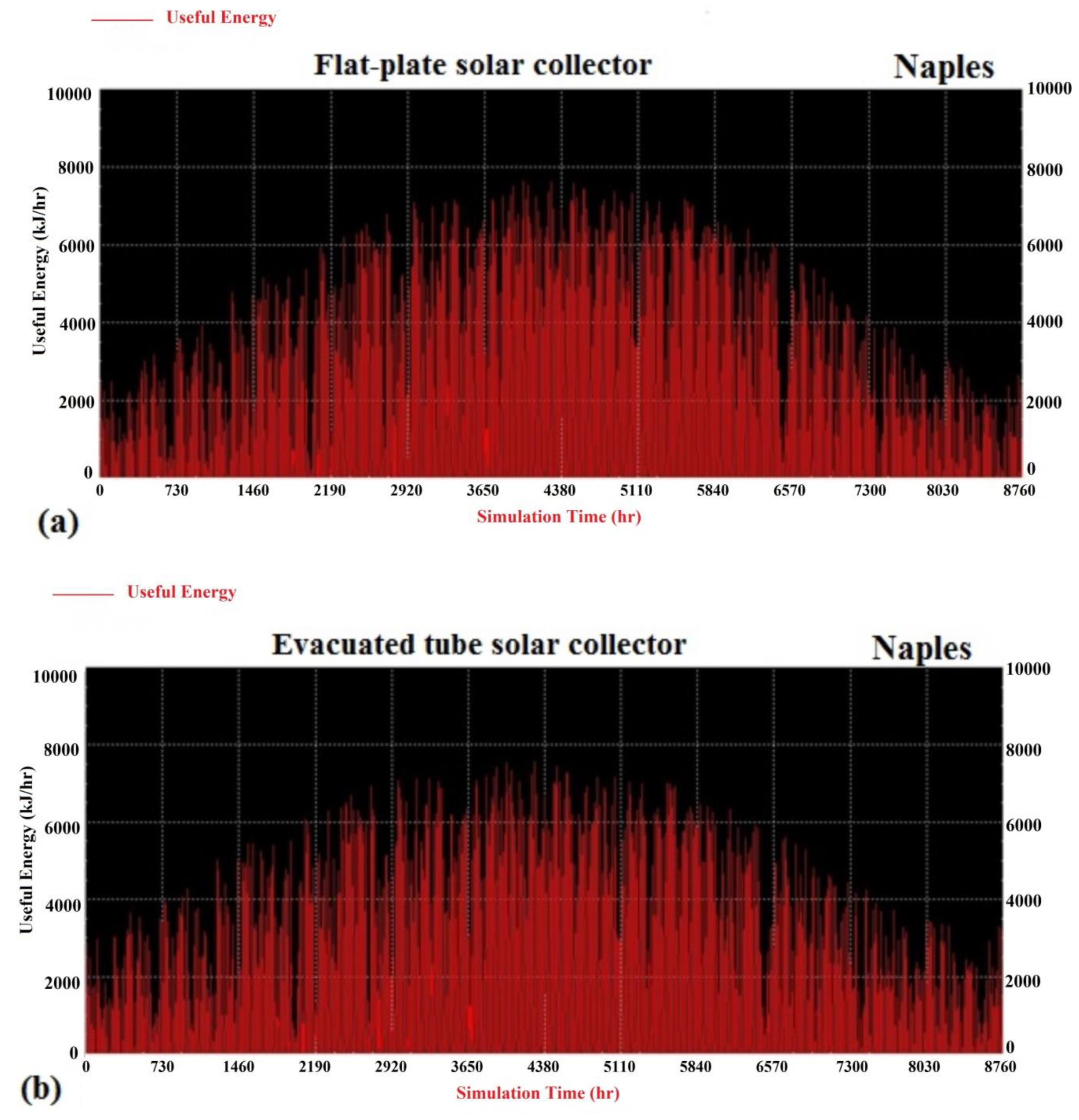
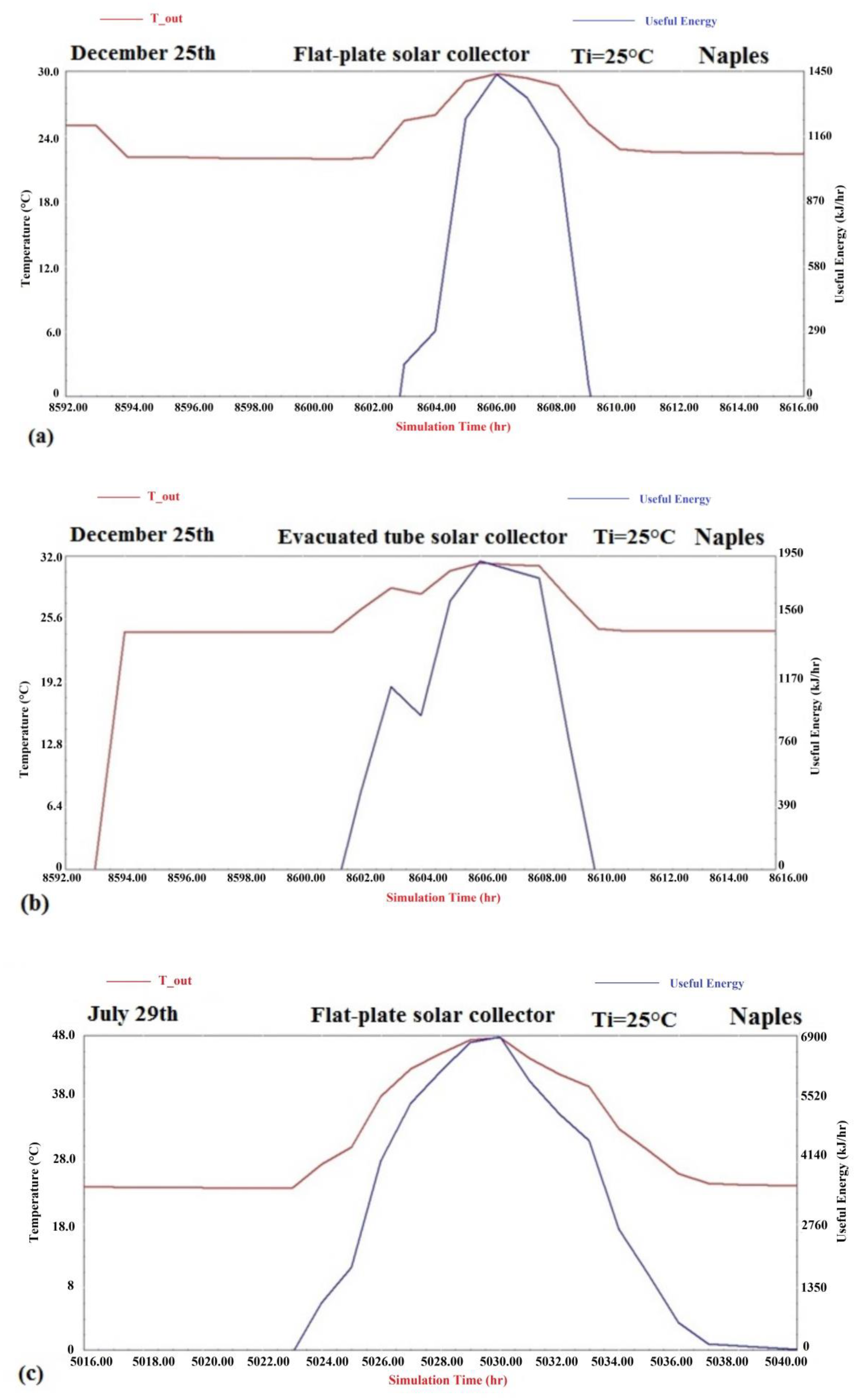

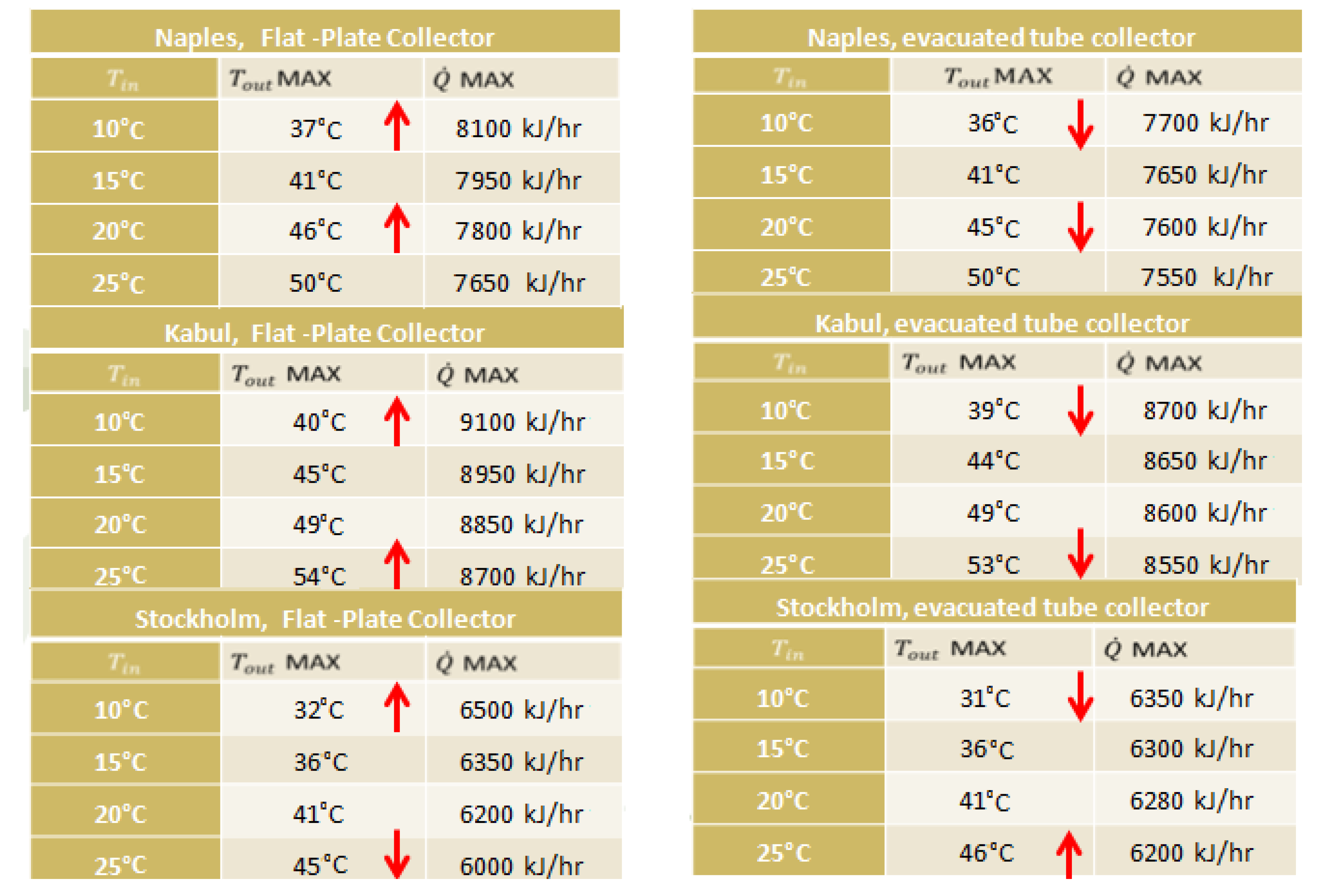
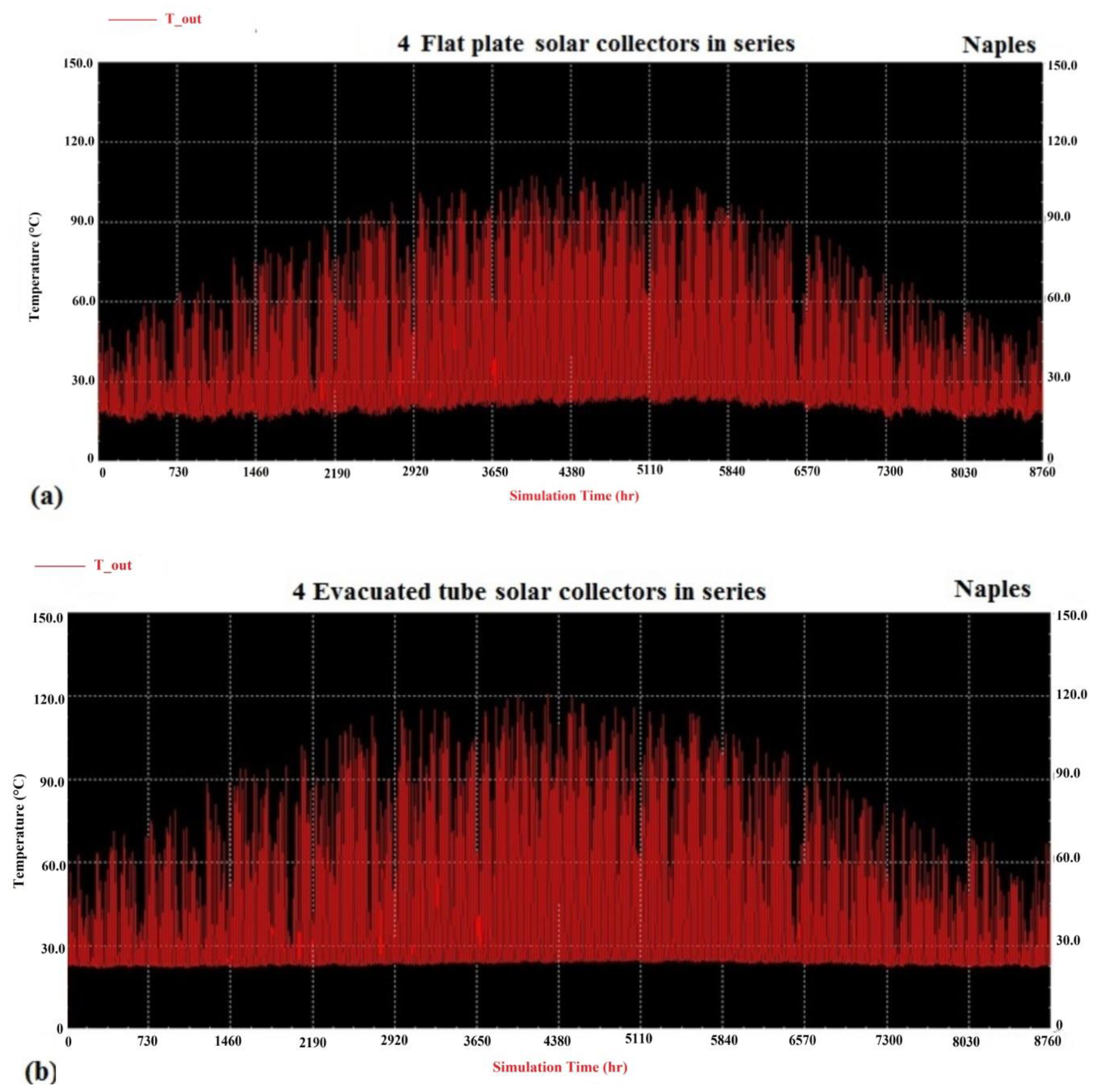


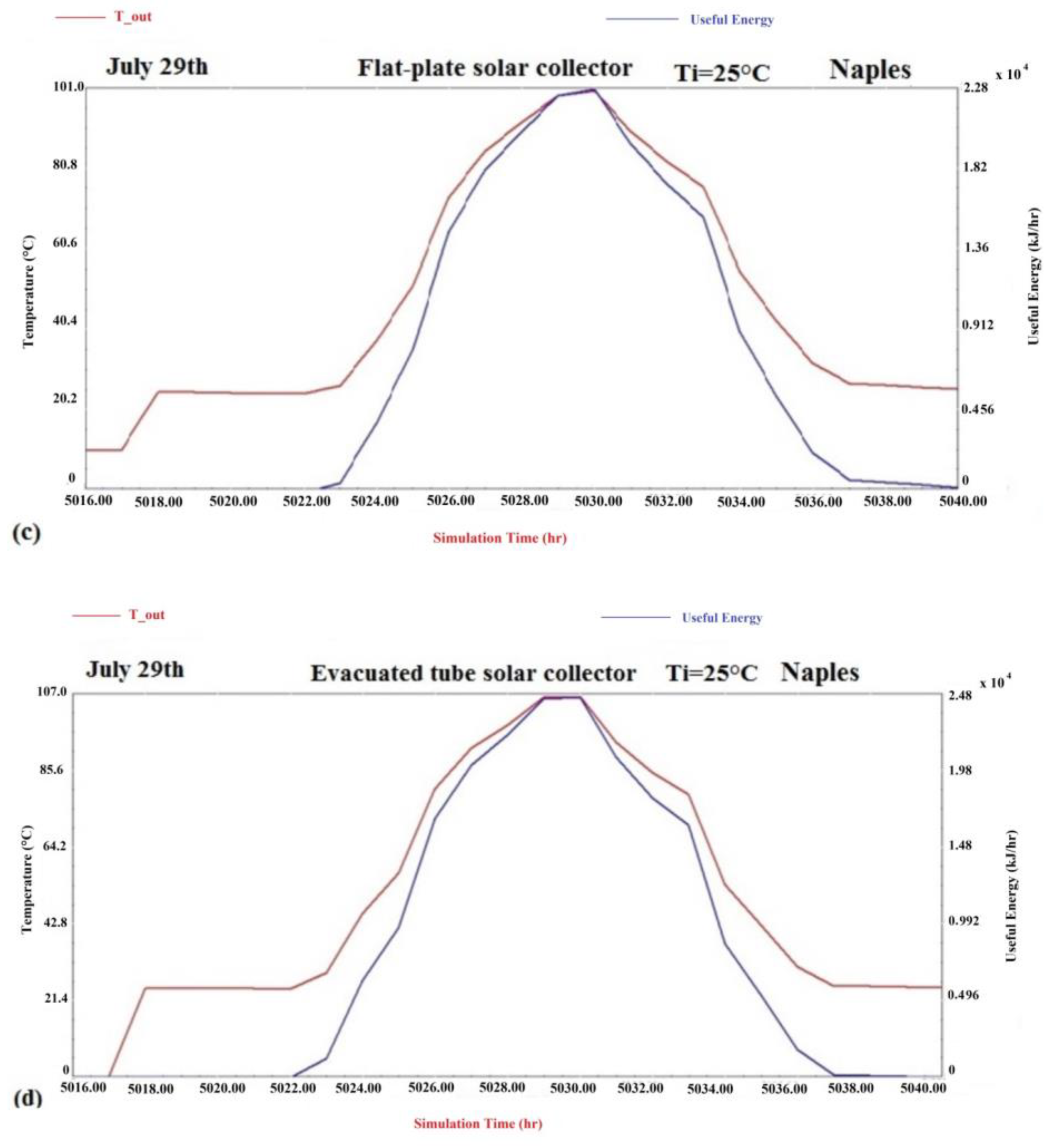

© 2020 by the authors. Licensee MDPI, Basel, Switzerland. This article is an open access article distributed under the terms and conditions of the Creative Commons Attribution (CC BY) license (http://creativecommons.org/licenses/by/4.0/).
Share and Cite
Greco, A.; Gundabattini, E.; Gnanaraj, D.S.; Masselli, C. A Comparative Study on the Performances of Flat Plate and Evacuated Tube Collectors Deployable in Domestic Solar Water Heating Systems in Different Climate Areas. Climate 2020, 8, 78. https://doi.org/10.3390/cli8060078
Greco A, Gundabattini E, Gnanaraj DS, Masselli C. A Comparative Study on the Performances of Flat Plate and Evacuated Tube Collectors Deployable in Domestic Solar Water Heating Systems in Different Climate Areas. Climate. 2020; 8(6):78. https://doi.org/10.3390/cli8060078
Chicago/Turabian StyleGreco, Adriana, Edison Gundabattini, Darius S. Gnanaraj, and Claudia Masselli. 2020. "A Comparative Study on the Performances of Flat Plate and Evacuated Tube Collectors Deployable in Domestic Solar Water Heating Systems in Different Climate Areas" Climate 8, no. 6: 78. https://doi.org/10.3390/cli8060078
APA StyleGreco, A., Gundabattini, E., Gnanaraj, D. S., & Masselli, C. (2020). A Comparative Study on the Performances of Flat Plate and Evacuated Tube Collectors Deployable in Domestic Solar Water Heating Systems in Different Climate Areas. Climate, 8(6), 78. https://doi.org/10.3390/cli8060078






